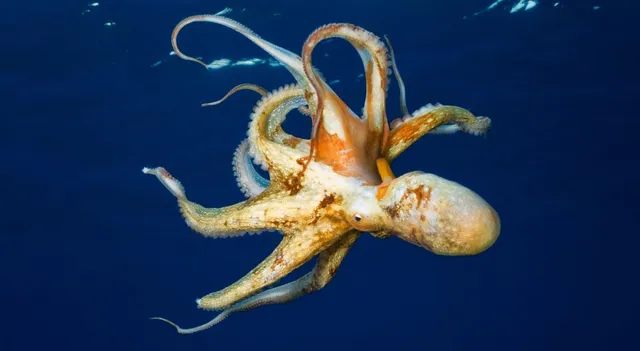- By Ridam Sharma
- Fri, 25 Jul 2025 05:52 PM (IST)
- Source:JND
Interesting facts about Animals: Nature has always been a topic of fascination for nature enthusiasts and people from all walks of life. Major credit for this fascination goes to the extraordinary animals with unique biological features. Some animals are built with the most unlike features, especially marine animals. As humans, life in water seems distinctly uncomfortable, marked by the presence of gills in place of lungs and the need to swim rather than walk. Octopus is also one of nature’s wonders. It has three hearts and blue blood, characteristics both unusual and captivating. Let’s take a brief look at what is the reason for these distinctive features.
Why Octopus Has Three Hearts?
Unlike humans and the majority of animals, who have a single heart, octopuses possess three hearts to effectively aid their energetic, water-living habits. Two of their hearts are branchial hearts, and their function is to flow blood to the gills, where it picks up oxygen. The third heart, also known as the systemic heart of the octopus, circulates oxygenated blood from the gills to the rest of the body.
Also Read: Do You Know Some Animals Change Colour For Survival? It's Not Just Chameleon
This three-way cardiovascular system means oxygen is supplied effectively to all the body parts of the octopus. This flow of blood is crucial for the survival of octopuses, as they are intense predators with a high need for quick energy to catch prey or get away from other predators. Surprisingly, when swimming, the systemic heart stops beating for a short while, which is why octopuses prefer to crawl rather than swim, which is less exhausting for them.
Why Octopus Has Blue Blood?
The majority of animals use iron-based haemoglobin to carry oxygen to the body, and this blood is usually red in colour. However, not for octopuses, they possess blue blood because of a copper-based protein known as hemocyanin. Hemocyanin is more effective than haemoglobin to carry blood flow along with oxygen under cold and oxygen-scarce conditions found in most ocean depths.
Also Read: List Of Top 10 Countries With Best Animal Rights In The World: Know Where India Ranks
The blue colour is due to copper, which binds with oxygen and gives the blood a bluish kind of colour, unlike the red colour from iron in human blood. This helps octopuses survive in varied marine habitats, from shallow reefs to even the bottom of oceans.
The three hearts and blue blood are just part of what makes octopuses extraordinary creatures. These features add to the already unique existence of the octopus with intelligence, camouflage skills, and flexible bodies. These features make the octopus a remarkable example of how evolution shapes life for survival in challenging environments.

